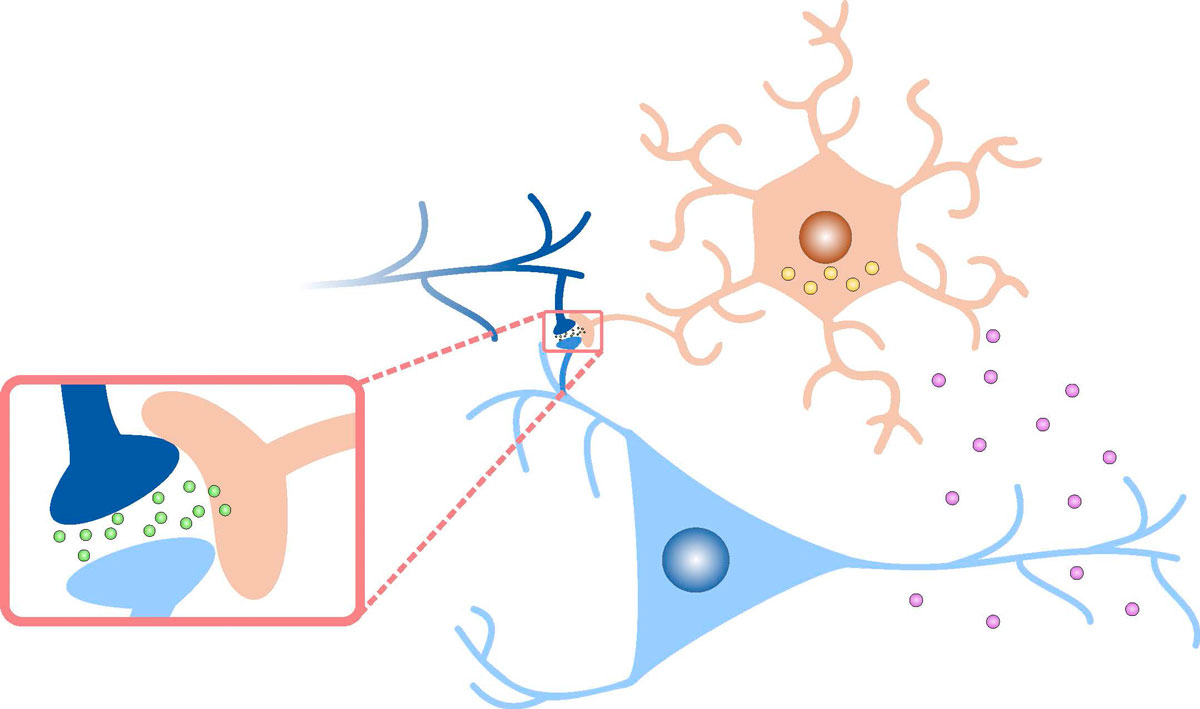
Bonn, August 16 – Star-shaped glial cells, known as astrocytes, are proving to be more than just supportive structures in the brain. Recent research conducted at the University Hospital Bonn (UKB) and the University of Bonn reveals that these cells play an active role in learning and memory. By interacting with nerve cells, astrocytes regulate the brain's rapid adaptation to new information. These groundbreaking findings have been published in the prestigious journal Nature Communications Biology.
In the brain, synaptic plasticity – the ability to modify neuronal connections over time – is essential for learning and memory. Traditionally, scientists have focused on neurons and their synapses. However, the discovery of intracellular Ca2+ signaling in astrocytes suggested that these cells are integral to the process. "Astrocyte dysfunction can significantly impair our ability to learn, underscoring their importance in cognitive processes. However, their exact functions have remained elusive," explains Prof. Tatjana Tchumatchenko, corresponding and co-senior author of the study, and research group leader at the Institute of Experimental Epileptology and Cognition Research at the UKB.
Decoding the Cellular Interactions Behind Learning:
"Our work as computational neuroscientists is to use the language of mathematics to interpret experimental observations and build coherent models of the brain," says co-senior author Dr. Pietro Verzelli, a postdoctoral fellow in Prof. Tchumatchenko's group. The team developed a biophysical model of learning based on a recently discovered biochemical feedback loop between astrocytes and neurons, which explains the learning deficits observed in mice with impaired astrocytic regulation. The model highlights the critical role astrocytes play in facilitating the brain's ability to adapt and rewire synaptic connections by regulating the neurotransmitter D-serine.The study's first author, Lorenzo Squadrani, a PhD student in Tchumatchenko's group, adds, "Our mathematical framework not only explains experimental observations but also offers new, testable predictions about the learning process."
This research bridges the gap between theoretical models of plasticity and experimental findings on neuron-glia interactions. It positions astrocytic regulation as a key factor in dynamic synaptic adaptations, a central concept in synaptic plasticity. "Our findings contribute to a deeper understanding of the molecular and cellular mechanisms underpinning learning and memory. They also open up new avenues for therapeutic interventions targeting astrocytes to enhance cognitive functions," says Prof. Tchumatchenko.
Funding:
This research was funded by the German Research Foundation (DFG) – Project ID 227953431 – SFB 1089 and the iBehave network, funded by the Ministry of Culture and Science of the State of North Rhine-Westphalia.
Publication:
Lorenzo Squadrani, Carlos Wert-Carvajal, Daniel Müller-Komorowska, Kirsten Bohmbach, Christian Henneberger, Pietro Verzelli, and Tatjana Tchumatchenko: Astrocytes enhance plasticity response during reversal learning; Nature Communications Biology; DOI: https://doi.org/10.1038/s42003-024-06540-8
Scientific Contact:
Prof. Tatjana Tchumatchenko
Professor for Computational Neuroscience of Behavior
Institute for Experimental Epileptology and Cognitive Research
University Hospital Bonn
TRA 1 "Modeling", University of Bonn
E-mail: tatjana.tchumatchenko@uni-bonn.de

Caption: The model introduces astrocytes as a third player in the communication between neurons, where endocannabinoids from the postsynaptic neuron bind to astrocyte receptors, altering D-serine concentration and synaptic sensitivity.
Image Credit: University Hospital Bonn (UKB) / Tchumatchenko Group

Caption: How star-shaped cells increase flexible learning (from left to right) Dr. Pietro Verzelli, Prof. Tatjana Tchumatchenko, and Lorenzo Squadrani.
Image Credit: University Hospital Bonn (UKB) / Rolf Müller
Press Contact:
Dr. Sarah Imtiaz
Scientific Coordinator of iBehave Network
E-mail: sarah.imtiaz@ukbonn.de
About iBehave Network:
The iBehave Network is a collaborative research initiative focused on understanding the neural mechanisms underlying behavior. Bringing together experts from various disciplines, iBehave integrates cutting-edge neuroscience, advanced computational modeling, and innovative behavioral studies to explore how the brain processes information and drives behavior. Supported by the Ministry of Culture and Science of the State of North Rhine-Westphalia, the network fosters collaboration across leading research institutions to advance our understanding of brain function and to translate these insights into therapeutic applications for neurological and psychiatric disorders.





